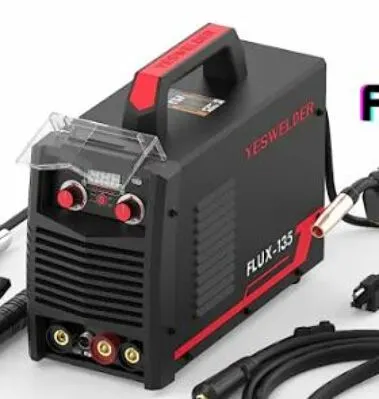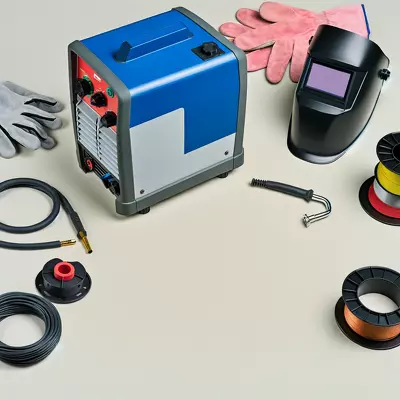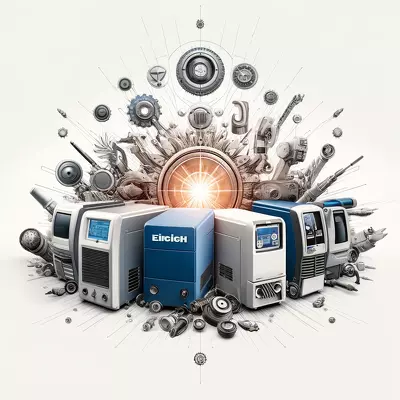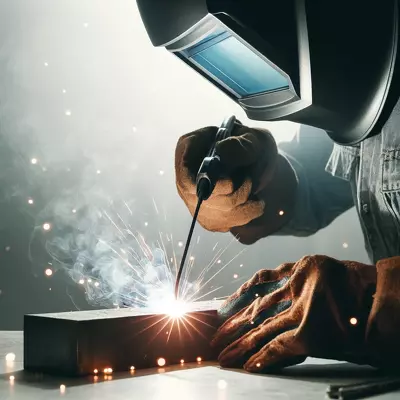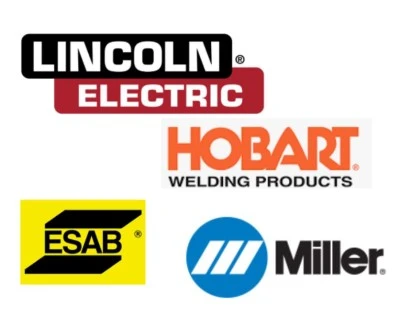The Home Artisan’s Guide to Mastery: Choosing the Best MIG Welder for Your Domestic Workshop
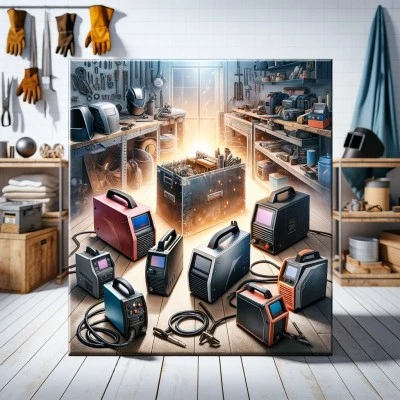
Selecting the ideal MIG welder for domestic projects is crucial for both novice and experienced welders. It’s about finding a balance between versatility, efficiency, and budget-friendliness. Understanding the nuances of various MIG welders helps in making an informed choice, ensuring a seamless and productive welding experience at home. This article guides you through the key factors to consider, helping you choose a welder that best suits your home welding needs.
I. Introduction
In the realm of metal fabrication and repair, the choice of a suitable MIG welder for home use is an essential decision for both beginners and seasoned artisans. Metal Inert Gas (MIG) welding, known for its ease and versatility, is widely preferred for various home projects ranging from auto repair to crafting metal art. Selecting the right MIG welder not only enhances the quality of your work but also ensures safety and efficiency in your endeavors.
A. Importance of Choosing the Right MIG Welder for Home Use
The importance of choosing the right MIG welder for home use cannot be overstated. The right welder can make the difference between a frustrating, inefficient experience and a fulfilling, productive one. For home users, a MIG welder that balances functionality with ease of use is ideal. It should be powerful enough to handle various materials and thicknesses yet simple enough for beginners to operate. Moreover, considering the limited space in a typical home workshop, the size and portability of the welder are also crucial factors.
B. Overview of Features to Consider
When selecting a MIG welder for home use, several features require careful consideration. These include the welder’s power output and amperage range, which determine the thickness and type of materials it can weld. The size and portability are important for ease of storage and maneuverability around the workspace. Additionally, the welder’s duty cycle, which indicates how long it can operate continuously without overheating, is crucial for understanding its performance limits. Finally, the overall cost and value for money are important for budget-conscious buyers, ensuring that the welder offers the necessary features without breaking the bank.
II. Key Considerations in Selecting a MIG Welder
A. Understanding Welder Power and Amperage Range
The power and amperage range of a MIG welder dictates its capability to handle various welding tasks. A higher amperage range allows for welding thicker materials, making it a versatile choice for different projects. For most home applications, a welder with an amperage range of 30-250 amps is sufficient. This range is ideal for welding thin sheet metals to moderately thick materials, providing flexibility for various home projects.
B. Importance of Welder Size and Portability
For home welders, where workspace is often limited, the size and portability of the welder are vital. A compact and lightweight welder is easier to store and move around, making it ideal for home workshops. Some welders come with carrying handles or are designed to be easily transported, adding to their convenience.
C. Evaluating Duty Cycle and Performance
The duty cycle of a MIG welder refers to the length of time it can operate at a given amperage before needing to cool down. It is usually expressed as a percentage of 10 minutes. For instance, a 20% duty cycle at 90 amps means the welder can run for 2 minutes at 90 amps before it needs an 8-minute cooldown. A higher duty cycle is desirable for longer continuous welding, reducing downtime and increasing efficiency.
D. Budget Considerations and Value for Money
While the cost is a significant factor, it’s essential to balance it with the features and quality you need. Cheaper models might save money upfront but could lack durability or the features required for certain types of welding. Conversely, expensive models offer more features than necessary for basic home use. Finding a welder that offers the best value for money, with the right balance of features and cost, is key.
III. Top MIG Welders for Home Use
A. YesWelder MIG-205DS MIG Welder – Best for the Money
The YesWelder MIG-205DS stands out as an excellent choice for budget-conscious users, offering a blend of affordability and versatility. It’s a dual voltage welder capable of both flux-core and MIG welding. With an amperage range of 30-205 amps and a 20% duty cycle at 90 amps, it’s suitable for a wide range of home welding tasks. Despite its lower price point, it doesn’t skimp on features, offering a digital display and comprehensive controls for precise welding.
B. The Hobart Handler 140 500559 MIG Welder – Best Overall
The Hobart Handler 140 is renowned for its reliability and quality, making it a favorite among home welders. It operates on standard 110V household power and offers a user-friendly interface, perfect for beginners and experienced users alike. With an amperage range of 25-140 amps and a 20% duty cycle at 90 amps, it’s versatile enough for most home projects. Its durability and ease of use make it an excellent long-term investment for home workshops.
C. Forney Easy Weld 261 140 FC-i Welder – Best for Beginners
For those new to welding, the Forney Easy Weld 261 offers an ideal starting point. It’s a flux-core welder, which means it doesn’t require a separate gas supply, simplifying the setup process. Lightweight and portable at only 19 lbs, it’s perfect for small home projects and repairs. With an amperage range of up to 140 amps, it’s capable of handling light to moderate welding tasks, making it a great tool for beginners.
IV. Additional Features and Accessories
A. Wire Feed Speed and Control
Wire feed speed is critical in MIG welding, as it affects the quality and appearance of the weld. A welder with adjustable wire feed speed provides better control, allowing for a cleaner and more precise weld. Some models come with advanced control systems that automatically adjust the speed based on the welding conditions, offering greater ease of use and consistency in welds.
B. Gas vs. Gasless Welding Options
MIG welders can be either gas or gasless (flux-core). Gas welders use a shielding gas and are generally preferred for their cleaner welds and versatility in welding various metals. Gasless welders, on the other hand, are more convenient for outdoor use and simpler to set up, as they don’t require a gas supply. Some models offer the flexibility to switch between gas and gasless welding, providing the best of both worlds.
C. Understanding Thermal Overload Protection
Thermal overload protection is a safety feature that prevents the welder from overheating, which can cause damage to the machine. This feature automatically shuts off the welder when it exceeds a certain temperature, protecting the internal components. It’s an important feature for prolonging the life of the welder and ensuring safe operation.
V. Maintenance and Safety Tips
A. Regular Maintenance Routines
Regular maintenance is crucial to ensure the longevity and optimal performance of your MIG welder. This includes checking and cleaning the wire feeder, replacing the contact tips when worn, and ensuring the gas nozzles are free from spatter. It’s also important to regularly inspect the cables and connections for any signs of wear or damage.
B. Safety Precautions and Gear
Safety is paramount in welding. Always wear appropriate protective gear, including a welding helmet, gloves, and protective clothing. Ensure your workspace is well-ventilated and free from flammable materials. Additionally, be aware of the electrical hazards associated with welding and always follow the manufacturer’s safety instructions.
C. Troubleshooting Common Issues
Familiarizing yourself with common welding issues and their solutions can save time and frustration. Issues such as erratic wire feeding, excessive spatter, or poor weld quality often have simple fixes, like adjusting the wire feed speed and tension or replacing a worn contact tip. Regularly consulting the welder’s manual and seeking advice from experienced welders can also be invaluable in troubleshooting.
In conclusion, choosing the best MIG welder for home use requires careful consideration of various factors, including power, size, budget, and additional features. Whether you’re a beginner or an experienced welder, the right MIG welder can make your welding projects more enjoyable and successful. Regular maintenance and adherence to safety guidelines will ensure your welding experience is not only productive but also safe. With the right knowledge and tools, you can confidently embark on your welding journey and bring your metalworking projects to life.
VI. FAQs
Q: What is MIG welding, and why is it preferred for home use?
A: MIG (Metal Inert Gas) welding is a process that uses a continuously fed wire electrode and a shielding gas to create a weld. It’s preferred for home use because of its ease of learning, efficiency in handling a variety of metals, and cleaner welds compared to other methods.
Q: How do I choose the right MIG welder for my home projects?
A: Consider the types of projects you’ll be undertaking, the thickness of the materials, and the welder’s power output. Also, factor in the welder’s duty cycle, portability, and whether you need a gas or gasless model.
Q: Can I use a MIG welder for different types of metals?
A: Yes, MIG welders are versatile and can be used on various metals, including steel, stainless steel, and aluminum. However, welding aluminum may require a spool gun and different settings.
Q: What safety equipment is necessary when using a MIG welder?
A: Essential safety equipment includes a welding helmet with the proper shade, gloves, protective clothing, and safety glasses. Also, ensure your work area is well-ventilated and free of flammable materials.
Q: How important is the duty cycle in a MIG welder for home use?
A: The duty cycle is crucial as it indicates how long you can weld without overheating the machine. A higher duty cycle is better for longer projects, while a lower duty cycle is sufficient for intermittent welding.
Q: What is the difference between gas and gasless MIG welding?
A: Gas MIG welding uses a shielding gas to protect the weld pool from contamination, providing cleaner welds. Gasless (flux-cored) welding doesn’t require external gas, making it more portable and suitable for outdoor use.
Q: Can I upgrade my MIG welder for more advanced projects in the future?
A: Many MIG welders offer upgrade options like adding a spool gun for aluminum welding or replacing parts for improved performance, allowing you to tackle more advanced projects.
Q: Is a MIG welder suitable for beginners to use for welding aluminum?
A: While MIG welding can be used on aluminum, it can be challenging for beginners due to the metal’s high thermal conductivity. It is recommended that beginners start with simpler metals like steel.
Q: How does the Lincoln 140 compare to the Hobart 140 in terms of performance and features?
A: Both welders are highly regarded, but the Lincoln 140 typically offers a broader amperage range and advanced features, while the Hobart 140 is known for its reliability and ease of use, making it a favorite among beginners.
Q: What are some common maintenance tips for a MIG welder?
A: Regularly clean and inspect the gun and wire feeder, replace consumables like tips and liners as needed, and ensure all connections and cables are secure and in good condition.
Q: Can I perform MIG welding outdoors?
A: Yes, MIG welding can be performed outdoors, but it’s best to use a flux-cored wire to cope with possible wind that can disrupt the shielding gas in traditional MIG welding.
Q: What is the best way to learn MIG welding as a beginner?
A: Start with a basic MIG welding course, either online or in a workshop setting, and practice consistently on scrap metal. Reading welding books and watching instructional videos can also be very beneficial.
VII. Conclusion
A. Best Offer
The Hobart Handler 140 500559 MIG Welder is the best overall choice for home use. It balances ease of use, reliability, and versatility, making it ideal for a range of projects.
B. The Alternative
For those seeking a more budget-friendly option, the YesWelder MIG-205DS MIG Welder offers excellent value for money, providing sufficient capabilities for most home welding tasks.
VIII. Suggested Readings
Welding can be a complex and nuanced craft, and there’s always more to learn. For those interested in expanding their knowledge, several books offer invaluable insights and instructions. From guides for beginners to advanced texts, these books cover a wide range of topics in MIG welding and beyond.
- “Welding: Principles and Applications” by Larry Jeffus – This comprehensive text covers a broad spectrum of welding topics, including safety, metallurgy, and various welding processes.
- “Welding Essentials” – A beginner-friendly book presented in a Q&A format, providing easy access to information about welding safety, techniques, and problem-solving.
- “Math for Welders” – This unique resource combines basic mathematics skills with practical exercises, making it an essential guide for welders who wish to improve their technical skills.
- “Modern Welding” – A thorough exploration of welding and cutting processes, this book is invaluable for understanding the science and practice behind various welding techniques.
- “Audel Welding Pocket Reference” – A handy, pocket-sized guide offering quick access to essential welding information, ideal for both students and professionals.
Whether you’re just starting out or looking to refine your skills, these books provide a wealth of information to help you on your welding journey. From mastering the basics to exploring advanced techniques, they offer insights and advice to welders at all levels.

